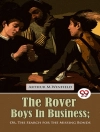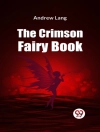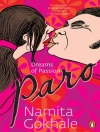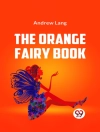In ‘Osceola the Seminole; or, The Red Fawn of the Flower Land, ‘ Mayne Reid weaves a captivating narrative that explores the themes of cultural conflict and resilience through the lens of Seminole life in 19th-century America. Reid’s distinctive adventure style, rich in vivid descriptions and action-driven prose, immerses the reader in the lush landscapes of Florida while deftly portraying the complex dynamics between Native Americans and encroaching settlers. This work not only provides entertainment but also serves as a reflection of the era’s socio-political tensions, often romanticizing the indigenous experience amid colonial challenges. Mayne Reid, an Irish-American author renowned for his adventure novels, was deeply influenced by his own experiences as a soldier and a traveler in the Americas. His fascination with indigenous cultures and the harsh realities of frontier life resonates throughout his writing, particularly in ‘Osceola.’ Reid’s understanding of the plight faced by Native Americans, coupled with his desire to represent their stories, underscores his motive to inspire empathy and awareness among his readership during a time of significant strife. I highly recommend ‘Osceola the Seminole’ to readers interested in historical fiction that captures the spirit of an age. This book not only entertains but enlightens, inviting readers to engage with a lesser-known narrative that emphasizes the strength and dignity of a people fighting to preserve their identity and land.
A propos de l’auteur
Captain Mayne Reid, born Thomas Mayne Reid on April 4, 1818, in Ballyroney, County Down, Ireland, was a prolific 19th-century author known for his adventurous novels often set on the American frontier. Reid’s work showcases his deep interest in nature and a flair for creating suspense through detailed narratives. Before committing himself to writing, Reid emigrated to the United States in 1839 and led a diversified life, including serving as a storekeeper, teacher, and even joining the US Army during the Mexican-American War, an experience that later influenced his writing. Reid began his literary career with contributions to periodicals before authoring his first novel. ‘Osceola the Seminole; or, The Red Fawn of the Flower Land’ is considered a standout work, highlighting Reid’s characteristic exploration of the frontiers and his empathy towards the Native American experience during times of conflict. His narration often blended factual landscapes and events with fiction, a form of literary realism that predated later trends. Although not as well remembered as contemporaries like Mark Twain, Reid’s novels were popular in their time and influenced the perceptions of American life around the world. Reid’s literary style often included protagonists who were young men facing dangers and moral choices, which made his books particularly popular among young readers. He passed away on October 22, 1883, in London, leaving behind a legacy as a master storyteller of the American wild.












